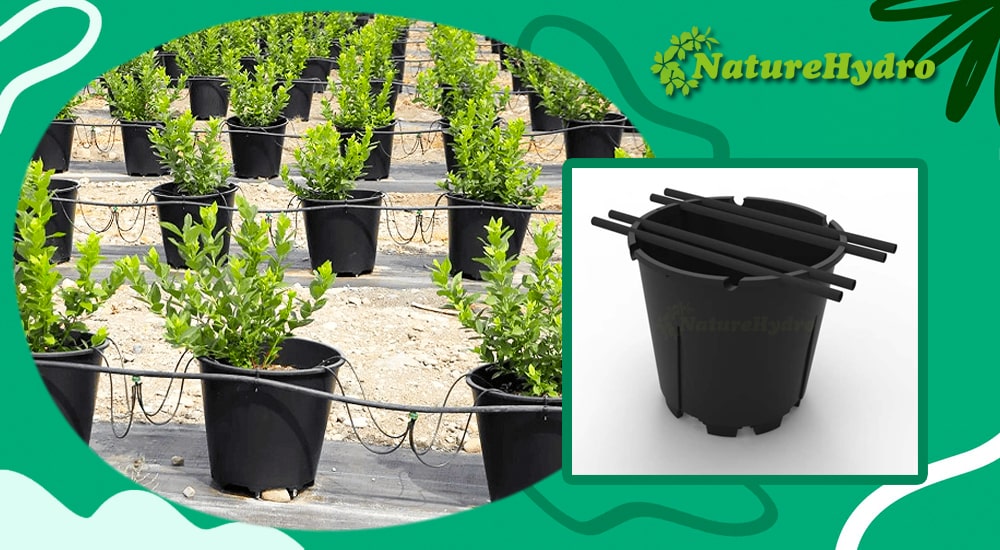
Growing berries in pots has become an increasingly popular method for urban gardeners and those with limited space. Potted berries, such as strawberries, blueberries, and raspberries, can thrive with the right care and conditions. One critical aspect of successful potted berry cultivation is ensuring that the roots receive adequate ventilation. This article delves into the importance of root ventilation for potted berries, exploring how it affects plant health, growth, and fruit production.
The Role of Root Ventilation
Roots play a vital role in plant health, absorbing water and nutrients from the soil and anchoring the plant. In a natural environment, roots have access to air pockets in the soil, which provide essential oxygen. For potted plants, achieving the same level of root ventilation can be challenging due to the confined space and different soil dynamics. Proper root ventilation is essential for:
- Oxygen Supply: Roots need oxygen for respiration, a process that converts sugars into energy necessary for growth and development. Poorly ventilated roots can suffer from oxygen deprivation, leading to root rot and other health issues.
- Prevention of Root Rot: Overly moist and poorly ventilated soil can create an environment conducive to root rot, caused by pathogens such as fungi and bacteria. Good ventilation helps to maintain a balance of moisture and air, reducing the risk of disease.
- Nutrient Uptake: Adequate air flow around the roots helps in the efficient uptake of nutrients. Compacted or waterlogged soil can hinder this process, leading to nutrient deficiencies and poor plant performance.
- Temperature Regulation: Proper ventilation helps in regulating soil temperature. Overheated roots can be stressed, affecting the overall health of the plant. Adequate air flow can moderate soil temperature, promoting a healthier root environment.
Methods to Improve Root Ventilation
Several techniques can be employed to enhance root ventilation for potted berries:
- Choosing the Right Pot: Select pots with adequate drainage holes. This prevents water from stagnating at the bottom, allowing air to circulate. Consider pots made from breathable materials like terracotta, which naturally allow air exchange through the pot walls.
- Soil Composition: Use a well-draining soil mix. Incorporate materials such as perlite, vermiculite, or coarse sand to improve soil aeration. Avoid using heavy garden soil, which can compact easily and restrict air flow.
- Pot Size: Ensure the pot size is appropriate for the berry plant. Overcrowded roots in a small pot can restrict air flow and lead to poor growth. Repotting to a larger container as the plant grows can help maintain good root ventilation.
- Elevating Pots: Place pots on stands or use pot feet to elevate them off the ground. This promotes better air circulation under the pot and prevents waterlogging.
- Regular Maintenance: Periodically check the soil moisture level and adjust watering practices. Allow the soil surface to dry slightly between waterings to encourage air flow. Pruning dead or overgrown roots can also help maintain a healthy root system.
Specific Considerations for Different Berries
Different types of berries have varying requirements for root ventilation:
- Strawberries: Strawberries have shallow root systems that require good aeration. Raised beds or containers with excellent drainage are ideal. Avoid planting too deeply to ensure roots have access to sufficient air.
- Blueberries: Blueberries prefer acidic soil with good drainage. Peat-based soil mixes are often recommended for their structure and aeration properties. Regularly check for compacted soil and gently loosen it to enhance air flow.
- Raspberries: Raspberries have extensive root systems that can quickly fill a pot. Larger containers with ample drainage and a light, airy soil mix are crucial. Regular root pruning and repotting can help manage root health and ventilation.
The Impact of Poor Ventilation
Lack of proper root ventilation can have several adverse effects on potted berry plants:
- Stunted Growth: Without adequate oxygen, roots cannot efficiently absorb water and nutrients, leading to stunted growth and reduced vigor.
- Root Rot: Constantly wet and poorly ventilated soil is a breeding ground for root rot. This condition can be fatal if not addressed promptly, as it severely compromises the plant's ability to take up nutrients.
- Nutrient Deficiencies: Poor air circulation in the soil can lead to nutrient lockout, where essential minerals become unavailable to the plant. Symptoms may include yellowing leaves, poor fruit development, and overall decline in plant health.
- Increased Susceptibility to Pests and Diseases: Stressed plants with poor root health are more vulnerable to pests and diseases. Healthy, well-ventilated roots contribute to a plant's natural defenses against such threats.
Case Studies and Success Stories
Many successful potted berry growers have emphasized the importance of root ventilation. For instance, a study conducted by a horticultural society found that potted strawberry plants with enhanced root ventilation produced 20% more fruit than those in non-ventilated conditions. Similarly, a blueberry farm utilizing breathable fabric pots reported healthier plants and higher yields.
Innovative Solutions and Future Trends
As the popularity of container gardening continues to rise, innovations in pot design and soil technology are emerging to address the need for root ventilation. Products such as air-pruning pots, which encourage root branching and prevent circling, are gaining traction. These pots have slits or holes that allow roots to be exposed to air, naturally pruning and promoting a more fibrous root system.
Another promising development is the use of soil additives like biochar, which improve soil structure and aeration while enhancing water retention and nutrient availability. Research into biodegradable pots made from natural fibers is also ongoing, offering a sustainable option that decomposes over time, enriching the soil and improving root health.
Conclusion
Ensuring proper root ventilation is crucial for the successful cultivation of potted berries. By understanding the importance of oxygen supply, preventing root rot, and promoting efficient nutrient uptake, gardeners can create optimal growing conditions for their plants. Implementing practical methods such as choosing the right pots, using well-draining soil mixes, and maintaining regular care routines can significantly enhance root health and overall plant performance. As innovative solutions continue to emerge, the future of potted berry cultivation looks promising, with healthier plants and higher yields on the horizon.
In summary, the roots of potted berries indeed need ventilation. Providing adequate air flow around the roots not only prevents common issues like root rot and nutrient deficiencies but also fosters a thriving environment for robust growth and bountiful fruit production. Whether you are an urban gardener with limited space or a seasoned horticulturist, prioritizing root ventilation will undoubtedly contribute to the success of your potted berry plants.





